Related Research Articles

Biomedical engineering (BME) or medical engineering is the application of engineering principles and design concepts to medicine and biology for healthcare purposes. BME is also traditionally logical sciences to advance health care treatment, including diagnosis, monitoring, and therapy. Also included under the scope of a biomedical engineer is the management of current medical equipment in hospitals while adhering to relevant industry standards. This involves procurement, routine testing, preventive maintenance, and making equipment recommendations, a role also known as a Biomedical Equipment Technician (BMET) or as clinical engineering.
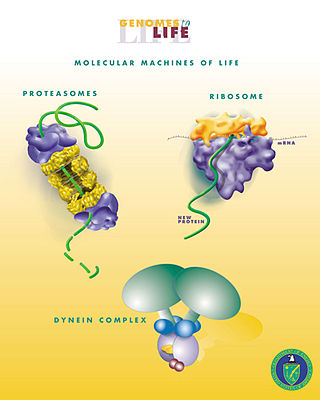
Biological engineering or bioengineering is the application of principles of biology and the tools of engineering to create usable, tangible, economically viable products. Biological engineering employs knowledge and expertise from a number of pure and applied sciences, such as mass and heat transfer, kinetics, biocatalysts, biomechanics, bioinformatics, separation and purification processes, bioreactor design, surface science, fluid mechanics, thermodynamics, and polymer science. It is used in the design of medical devices, diagnostic equipment, biocompatible materials, renewable energy, ecological engineering, agricultural engineering, process engineering and catalysis, and other areas that improve the living standards of societies.
Peter W. Zandstra, is a Canadian scientist who is the Director of the Michael Smith Laboratories at the University of British Columbia.

The National Institute of Biomedical Imaging and Bioengineering (NIBIB), founded at the National Institutes of Health (NIH) in 2000, is located in Bethesda, Maryland. It is one of 27 institutes and centers that are part of NIH, an agency of the U.S. Department of Health and Human Services (HHS).

Bruce J. Tromberg is an American photochemist and a leading researcher in the field of biophotonics. He is the director of the National Institute of Biomedical Imaging and Bioengineering (NIBIB) within the National Institutes of Health (NIH). Before joining NIH, he was Professor of Biomedical Engineering at The Henry Samueli School of Engineering and of Surgery at the School of Medicine, University of California, Irvine. He was the principal investigator of the Laser Microbeam and Medical Program (LAMMP), and the Director of the Beckman Laser Institute and Medical Clinic at Irvine. He was a co-leader of the Onco-imaging and Biotechnology Program of the NCI Chao Family Comprehensive Cancer Center at Irvine.

Shu Chien, is a Chinese–American physiologist and bioengineer. His work on the fluid dynamics of blood flow has had a major impact on the diagnosis and treatment of cardiovascular diseases such as atherosclerosis. More recently, Chien's research has focused on the mechanical forces, such as pressure and flow, that regulate the behaviors of the cells in blood vessels. Chien is currently President of the Biomedical Engineering Society.

Sangeeta N. Bhatia is an American biological engineer and the John J. and Dorothy Wilson Professor at MIT’s Institute for Medical Engineering and Science and Electrical Engineering and Computer Science (EECS) at the Massachusetts Institute of Technology (MIT) in Cambridge, Massachusetts, United States. Bhatia's research investigates applications of micro- and nano-technology for tissue repair and regeneration. She applies ideas from computer technology and engineering to the design of miniaturized biomedical tools for the study and treatment of diseases, in particular liver disease, hepatitis, malaria and cancer.

Linda Gay Griffith is an American biological engineer, and Professor of Biological Engineering and Mechanical Engineering at Massachusetts Institute of Technology, where she also directs the Center for Gynepathology Research.
Trey Ideker is a professor of medicine and bioengineering at UC San Diego. He is the Director of the National Resource for Network Biology, the San Diego Center for Systems Biology, and the Cancer Cell Map Initiative. He uses genome-scale measurements to construct network models of cellular processes and disease.
Robert M. Nerem, often referred to as Bob Nerem, a member of the U. S. National Academy of Engineering and the Institute of Medicine, held the Parker H. Petit Distinguished Chair for Engineering in Medicine and Institute Professor Emeritus at the Georgia Institute of Technology where he was an Emeritus Professor until his death.
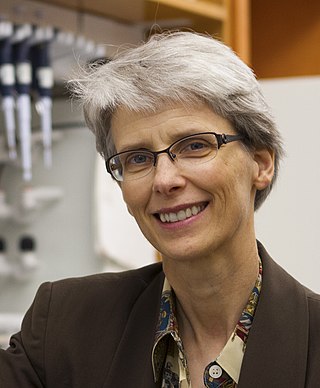
Nancy Allbritton is a Professor of Bioengineering and the Frank & Julie Jungers Dean of the College of Engineering at the University of Washington. She was previously a Kenan Professor and Chair in the Joint Department of Biomedical Engineering at the University of North Carolina at Chapel Hill and North Carolina State University.
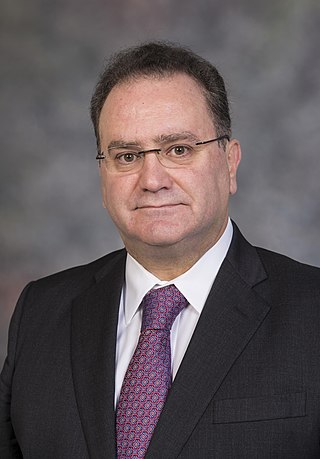
Antonios Georgios Mikos is a Greek-American biomedical engineer who is the Louis Calder Professor of Bioengineering and Chemical and Biomolecular Engineering at Rice University. He specialises in biomaterials, drug delivery, and tissue engineering.
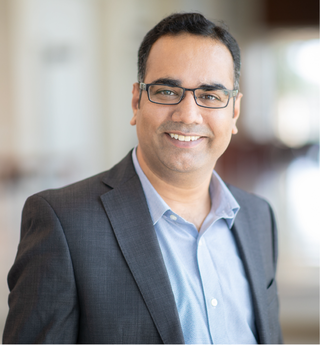
Akhilesh K. Gaharwar is an Indian academic and a professor in the Department of Biomedical Engineering at Texas A&M University. The goal of his lab is to understand the cell-nanomaterials interactions and to develop nanoengineered strategies for modulating stem cell behavior for repair and regeneration of damaged tissue.
Susan Margulies is an American engineer and assistant director of the U.S. National Science Foundation, heading the Directorate for Engineering. She is also the Georgia Research Alliance Eminent Scholar in Injury Biomechanics and Professor in the Wallace H. Coulter Department of Biomedical Engineering at the Georgia Institute of Technology and Emory University, where she served as chair from 2017 to 2021. She is a world leader in the biomechanics of head injury in infants.
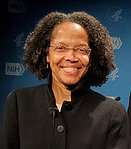
Gilda A. Barabino is the president of the Olin College of Engineering, where she is also a professor of biomedical and chemical engineering. Previously, she served as the dean of The Grove School of Engineering at the City College of New York, and as a professor in the Departments of Biomedical Engineering and Chemical Engineering and the CUNY School of Medicine. On March 4, 2021, she became the President-Elect of the American Association for the Advancement of Science.
Matthias Lutolf is a bio-engineer and a professor at EPFL where he leads the Laboratory of Stem Cell Bioengineering. He is specialised in biomaterials, and in combining stem cell biology and engineering to develop improved organoid models. In 2021, he became the scientific director for Roche's Institute for Translation Bioengineering in Basel.

Christopher S. Chen, born in 1968, is an American biological engineer. He is the William Fairfield Warren Distinguished Professor of Biomedical Engineering at Boston University and member of the Wyss Institute for Biologically Inspired Engineering at Harvard University in Boston.
Jerome Schultz is an American bioengineering researcher, professor, and university administrator. He is a fellow of several national scientific societies and a member of the National Academy of Engineering. He has held professorships at the University of Michigan, the University of Pittsburgh, University of California, Riverside, and he is currently a Distinguished Professor of Biomedical Engineering at the University of Houston.
Sina Y. Rabbany is the Jean Nerken Distinguished Professor of Engineering at Hofstra University, dean of the Fred DeMatteis School of Engineering and Applied Science, founding director of the school's Bioengineering program, and adjunct associate professor of bioengineering at the Weill Cornell Medical College of Cornell University. Under his tenure, the DeMatteis School's fast growth led to the school's planned expansion into a new Science and Innovation Center. His research concerns cellular and tissue engineering of the vascular system and investigates the impact of the biophysical microenvironment on the structure and function of endothelial cells. His research explores the capabilities of endothelial cells to build functional blood vessels and support organ regeneration. His h-index is 28 by Google Scholar.
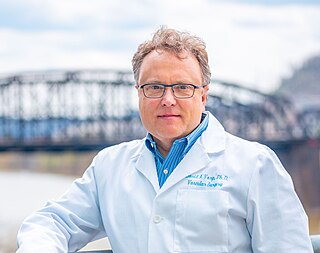
David A. Vorp is an American bioengineer, researcher, entrepreneur, and academic administrator noted for his contributions to aortic aneurysm biomechanics and pathobiology, and tissue engineered vascular grafts. He currently holds the titles of Associate Dean for Research at the University of Pittsburgh Swanson School of Engineering and the John A. Swanson Professor of Bioengineering, with secondary appointments in the departments of Cardiothoracic Surgery, Surgery, Chemical & Petroleum Engineering, and the Clinical & Translational Sciences Institute at the University of Pittsburgh. He also serves as the co-director of the Center for Medical Innovation., the acting director of the University’s GRID Institute, and the director of the Vascular Bioengineering Laboratory.
References
- ↑ Dixon, J. Brandon. "A tissue-engineered model of the intestinal lacteal for evaluating lipid transport by lymphatics." Biotechnology and Bioengineering 103.6 (2009): 1124-235. Print.
- ↑ Dixon. J. B., Gashev A., Zawieja D. C., and Cote G. L., "Measuring microlymphatic flow using high speed video microscopy", Journal of Biomedical Optics 10(6), 064016(1-7), 2005.